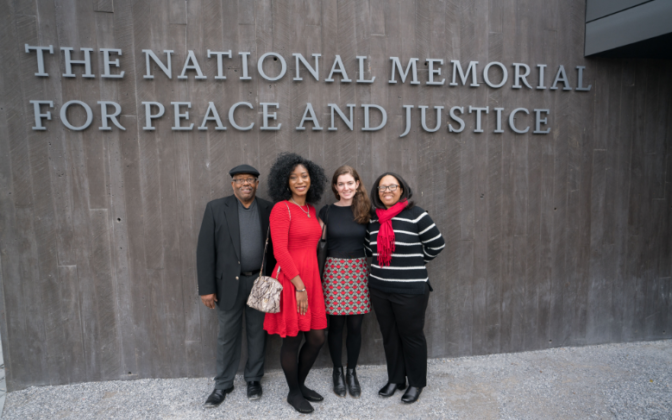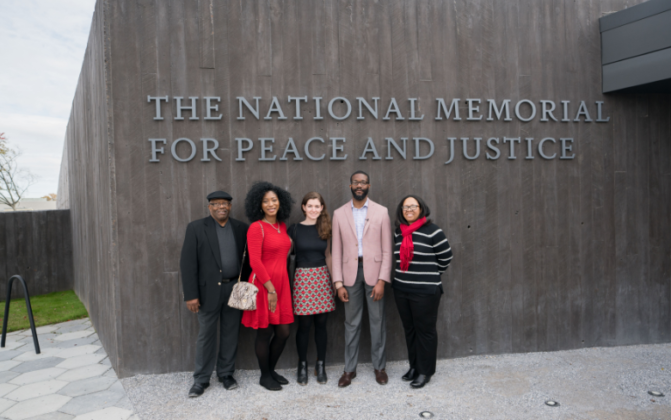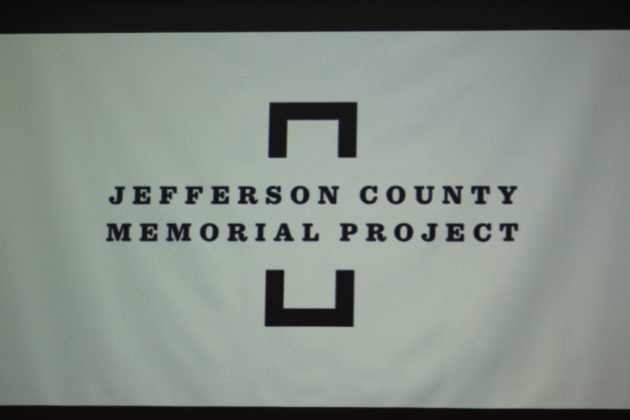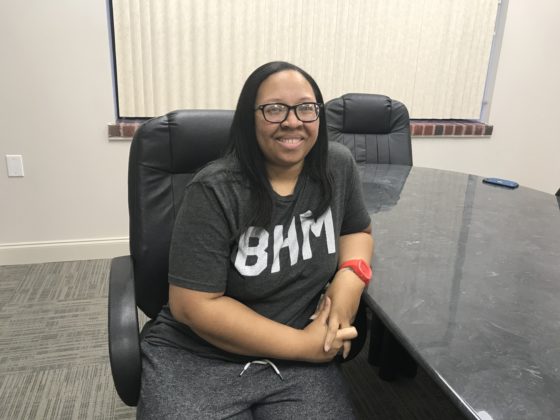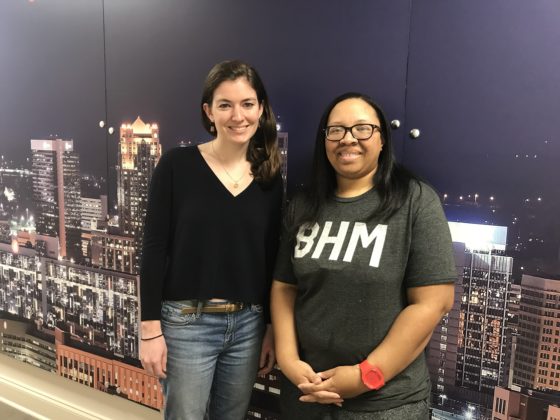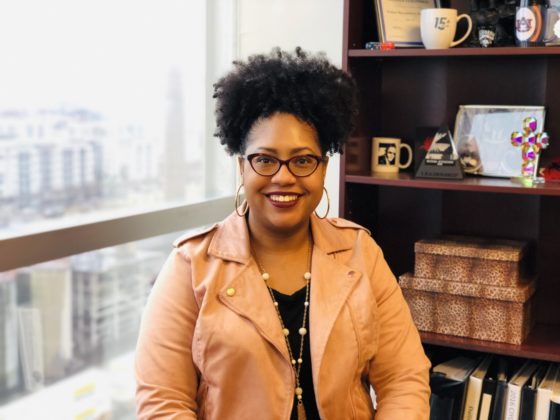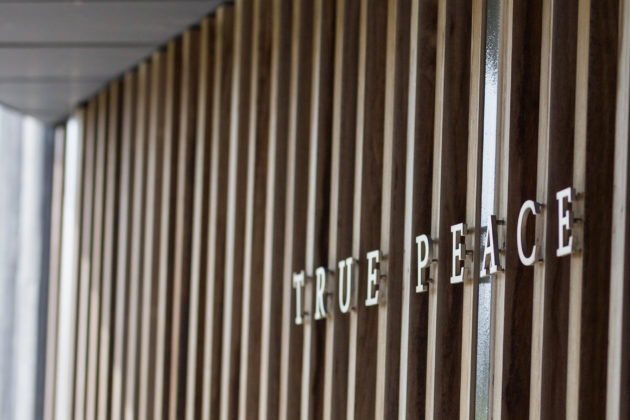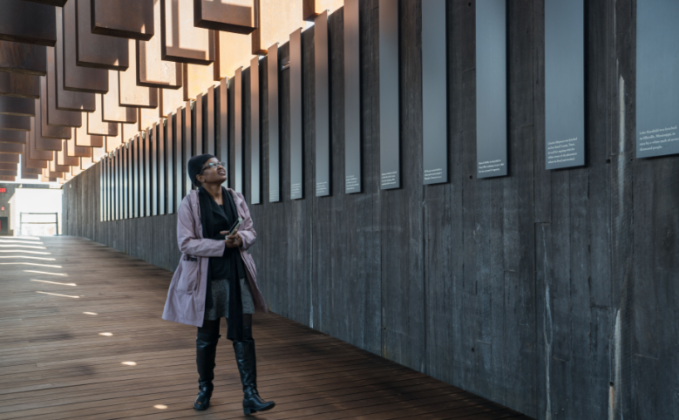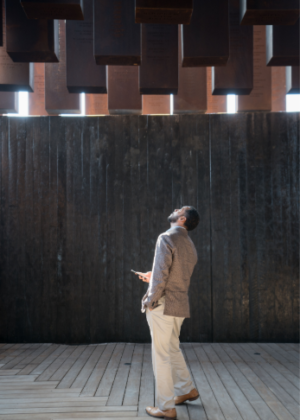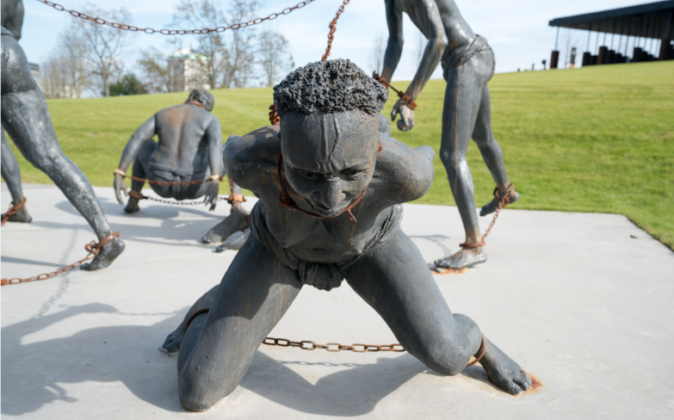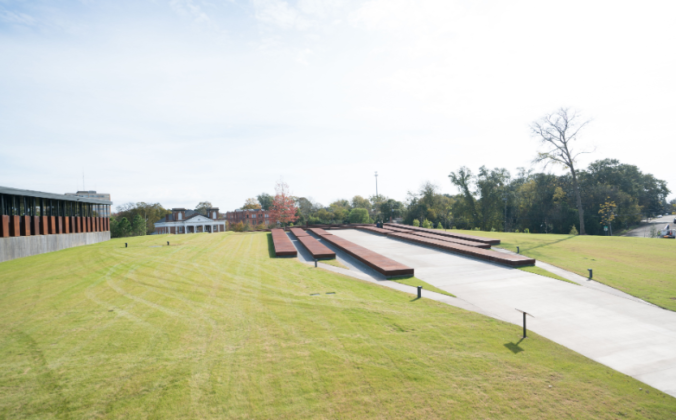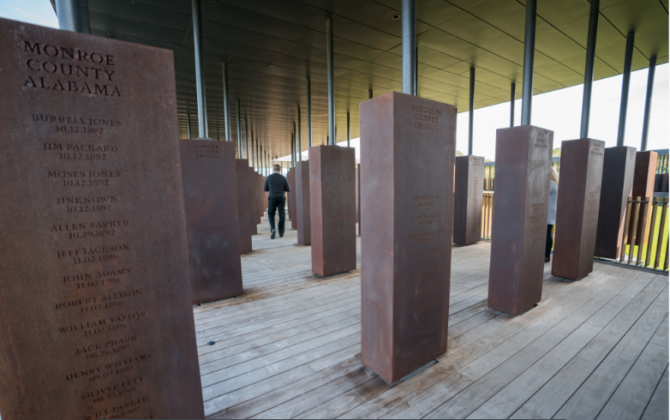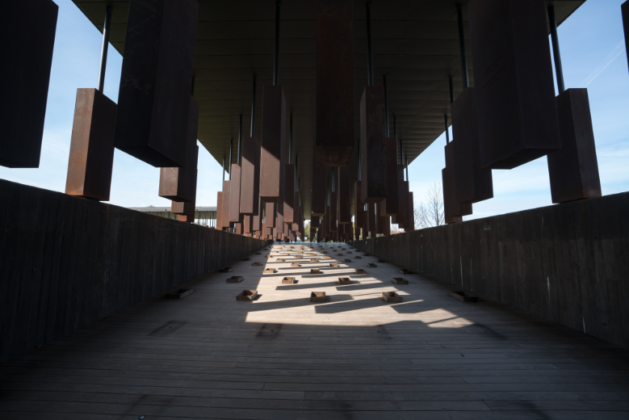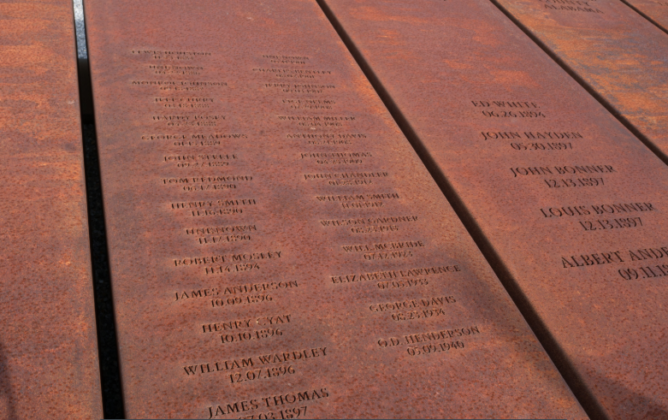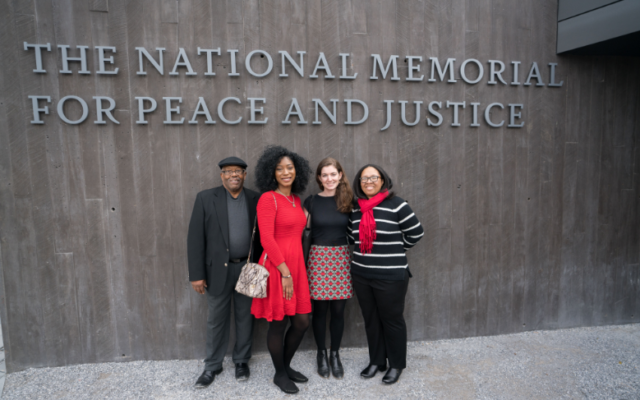
By Erica Wright
The Birmingham Times
Local activist and community organizer T. Marie King noticed a familiar name among the victims of racial terror when she paid a visit last spring to the landmark National Memorial for Peace and Justice, also known as the National Lynching Memorial, in Montgomery, Ala.
“I’m a person that likes to read everything, so I started to read all the names [on the jars of soil gathered from documented lynching sites],” she said. “I started on one side … [and] literally got to the last one in the corner and was like, ‘Whoa, that’s my great uncle!’”
Her great uncle, Ed Bracy, was killed in 1935 while organizing a sharecropper’s union in Lowndes County, Ala., King said: “I was a little thrown off because I’m like, ‘This is supposed to be lynching victims.’ My great uncle was not lynched: he was shot and killed by the [Ku Klux] Klan.”
King’s discovery of her great uncle and the fact that the jars filled with soil represent victims not only of lynching but also of all racial terror left an impact on the Birmingham native.
King and a core group of about eight local organizers—including Abigail Schneider, project director for JCMP; Scott Douglas, director of Greater Birmingham Ministries; Myeisha Hutchinson, president of the Woodlawn Community; and about 40 volunteers—are part of the Jefferson County Memorial Project (JCMP), a citizen-led coalition committed to telling the untold history of lynching in the county and explaining the historic links among slavery, Jim Crow, and present-day mass incarceration.
The group, comprised of intergenerational, interfaith, and interracial citizens, wants to use the retrieval of the Jefferson County monument from the National Lynching Memorial in Montgomery to spark a larger discussion about the history of racial violence in the area.
Reclaiming History
At the center of the National Memorial for Peace and Justice hang 800 steel monuments, one for each U.S. county where a racial-terror lynching took place; 800 duplicates are in the field surrounding the memorial. As part of the EJI’s Community Remembrance Project, implicated counties are invited to claim their monuments and install them as an effort to engage with this history in a constructive way. Jefferson County is one of the first to do so.
Schneider said she expects Alabama’s most populous county to reclaim its monument “sometime in 2019.” There are tentative plans to place the monument in downtown Birmingham’s Linn Park.
The JCMP organized shortly after the Equal Justice Initiative’s (EJI’s) National Lynching Memorial for Peace and Justice opened in Montgomery last April.
“The core came together in May, and throughout the summer, we started talking to community partners, telling them what we’re doing, and asking if they wanted to get involved,” said Schneider. “We had our public launch in late November, when we took [Birmingham Mayor Randall Woodfin] and his team down to the museum and memorial to gain support for the project.”
Last week, the JCMP published “The 30 Victims of Jefferson County,” a report of findings about racial-terror victims from the area; they plan to use that information for educational sessions they will conduct during the spring and summer. The report—complied by two dozen students from six local colleges: Miles College, Jefferson State Community College, Lawson State Community College, Birmingham-Southern College, Samford University, and the University of Alabama at Birmingham (UAB)—details the lynchings or racial-terror killings in Jefferson County between the 1880s and 1940.
Schneider said the goal is to not only tell a story of victimization but also highlight black activists throughout this half century “who were actively trying to stop these racial terrors of violence or lynchings from occurring.”
Getting Started
Schneider, a Yale University graduate, is no stranger to the history of lynching: her undergraduate thesis pushed against the idea that lynchings are a Southern narrative.
“This is a national discussion the U.S. needs to have—it’s not a Southern one or a Birmingham one,” she said. “When the [National Memorial for Peace and Justice] opened, I started reaching out to activists [around the Birmingham metro area], such as King, saying, ‘Hey, let’s bring Jefferson County’s monument back [from the museum in Montgomery]. Let’s be one of the first to lead this national dialogue. Birmingham, historically, has been one of the leaders in discussions around racial injustice in the U.S., so let’s continue that history.’”
King was intrigued by the concept.
“I definitely wanted to [play] a part, but I also understood that … this is something some people will shy away from … not because it’s not a good thing but I think because of what feelings it will pull out of people,” King said.
“Birmingham has a strong history, period. The opportunity to help lead this conversation was definitely appealing to me because I think it might help lead to other areas we need to [discuss], things we haven’t [addressed], … and being honest about our history.”
Hutchinson, another key player in the JCMP’s core group, is working with community and faith leaders to create coalitions that will handle the various lynching sites, in places like Bessemer, Leeds, Pratt City, and Irondale. These community coalitions will work with residents in their respective areas to erect historical markers that will complement the one planned for Linn Park.
Community Remembrance
Currently, the JCMP is actively working to retrieve the Jefferson County monument as part of the EJI’s Community Remembrance Project.
“Within the lynching memorial that’s coming to Jefferson County [will], … of course, be sites [where] lynchings took place in cities like Birmingham, Pratt City, Bessemer, and other places. … [For each of those locations], there will be a coalition led by community leaders,” said Hutchinson. “My primary role is building these coalitions of the sites where the lynchings actually happened because of my background in working with communities and community engagement.”
The coalition teams will consist of faith- and community-based leaders working together to establish historical markers that explain the specific lynchings that occurred within the towns where the lynchings took place.
“Because it’s a Jefferson County memorial, we want to make sure it’s not just a Birmingham memorial or a Birmingham coalition, so we are forming smaller coalitions in cities [across the area] to ensure that all parts of the county are involved in the conversation,” said Schneider.
Linn Park
Once retrieving the duplicate monument from the museum in Montgomery, the JCMP has its eye on Linn Park in downtown Birmingham as the main site; smaller sites will be in different cities throughout Jefferson County.
“We want it to be in Linn Park for numerous reasons,” King said. “[One reason is because] that’s where Lewis Houston was lynched.”
Houston, who was born in Chilton County, Ala., in 1863, moved to Birmingham in 1883 to work for a railroad company. While at work, he was arrested for the alleged assault of a white woman. According to the JCMP, Houston was kept in a jail on Fourth Avenue North. A white mob dragged him from that jail to Linn Park and hung him from a pine tree on Nov. 24, 1883.
King said, “We felt like [Linn Park] was the perfect place to start reconciling our history, and it’s our city government center.”
“I think Railroad Park and Kelly Ingram Park have their own vibes and have their own things and narratives being created around them, but we thought Linn Park [would be good for this project] because of the history and because an actual lynching took place there.”
Local organizers are still working with the EJI to retrieve the monument and determine the steps for doing so, said Schneider. They do know it won’t be hanging like it does in the museum in Montgomery; it will be erected vertically.
“[Also], we haven’t fully decided on Linn Park yet because it is a public monument in a public space, and our entire mission is to be community comprehensive and coalition based,” she said. “We’re still soliciting through our website and events [to determine whether] it should be at Linn Park. Once we feel like we have properly gotten that acceptance” by having conversations and opening up dialogue—just as they did with releasing the 30-victims report—the JCMP will make a final decision based on community input.
Over the next few months, the JCMP will host events during which they will ask Jefferson County residents where they would most like to see the memorial.
“Then we’ll start working with an architecture firm to really plan how we create a space of reflection and education and create a beautiful space to really honor these lives,” said Schneider.
Descendants
As a descendant of someone who was a victim of racial terror, King said it was stunning to see her uncle’s jar among those of the victims memorialized at the National Lynching Memorial.
“It was kind of overwhelming,” she said. “But being a community activist myself, I kind of had a sort of weird, eerie feeling of pride knowing that he was willing to put his life on the line for the work he was doing in Lowndes County.”
For more information about the Jefferson County Memorial Project, visit www.jeffersoncountymemorial.com.
Updated at 11:41 a.m. on 3/7/2019 for correct Abigail Schneider’s title.

